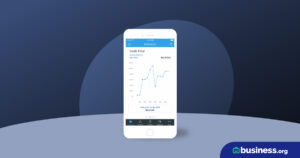💸 See if your business qualifies for a tax credit worth up to $26k per employee. 📞 Call Now: 855-979-9597
DSL vs. Satellite Internet: Which One Gives Your Business the Advantage?
We are committed to sharing unbiased reviews. Some of the links on our site are from our partners who compensate us. Read our editorial guidelines and advertising disclosure.
Because of COVID-19 (the coronavirus), more small-business owners are working from home than ever before. In response to the outbreak, internet providers are offering to help out.
All internet companies nationwide are pledging to waive any late fees or data overages for the next 60 days. In addition, certain companies are offering special deals and upgrades to new and existing customers.
Comcast Xfinity’s Internet Essentials program offers two free months of service to new customers and unlimited data use for 60 days to all subscribers. Additionally, the provider is allowing anybody to use Xfinity hotspots for free and is automatically increasing internet speeds for all essentials customers.
Cox is offering the first month of its low-income internet program, Connect 2 Compete, for free until May 12, 2020. The provider is also giving free phone and remote desktop support.
To help you sort through the differences and determine which Internet connection is most compatible with the unique needs of your business, we’ve paired the two popular options head to head in four informative rounds.
Read on to see which option best fits your internet business needs.
Need help finding an internet provider? Here's a roundup of our best business internet picks.
How DSL and Satellite Internet Work
DSL Internet service is provided by your phone company and uses the same line that carries conversations, but doesn’t interfere with communication like dial-up.
There are a few different types of DSL services. The most common is asymmetric DSL. With asymmetric DSL, download speeds are fast and upload speeds are much slower. A modem is required for DSL and is often offered as part of a professional installation package. The provider's technician may be able to use your business's existing phone line for DSL, but if your office phone line is older, the technician will need to install a new line for the service.

As the name implies, satellite Internet service is provided via signal rather than a hard-line like DSL. A land based Internet connection sends a signal to a satellite orbiting Earth, which then sends the signal to a satellite dish installed outside your home. Access is offered through a satellite Internet provider. Like DSL, satellite Internet requires professional installation and a modem.
Round One: Reliability
DSL offers a convenient “always-on” connection and is considered a reliable Internet option. However, because access is delivered by your business’ phone line, you’ll lose your Internet connection should the line be damaged or interrupted. Keep in mind that if your phone line is inadvertently cut by a service worker or taken out of service due to a storm, you’ll lose Internet access. If your business must have Internet to operate, it’s a good idea to have a back-up Internet access option.
Although satellite Internet is delivered via signal rather than wire, it can be just as reliable. However, its reliability depends greatly on where your office is located. Signals from satellites can be weakened or blocked by trees, mountains or other structures and inclement weather and sun spots can also deteriorate or block the signal.

Transform your business with a free assessment, and get a tailored recommendation for services that will drive better results.
Round Two: Availability
DSL might seem like the best option for your business, but you need to know that just because your business has phone service doesn’t mean you can get DSL. In fact, if your office is located more than 22,000 feet from the phone company central office (CO), you probably won’t be able to receive DSL service. That’s because the signal deteriorates and Internet speeds slow the farther you are located from a CO. Fortunately, over half of telephone customers in the U.S. live in areas that could support DSL.
Unlike DSL, satellite Internet is available almost everywhere around the world, even in some of the most remote areas. For businesses located in rural areas that are not serviced by phone service or for businesses located too far from a CO, satellite Internet may be the only option for a high-speed connection. All you need is a clear view of the Southern sky and you should be able to receive a connection.
By signing up I agree to the Terms of Use and Privacy Policy.
Round Three: Speed
Satellite Internet is usually slower than DSL and has much greater latency time. Typically, satellite Internet offers download speeds of 1 to 15 Mbps and upload speeds of 1 to 2 Mbps. Like DSL Internet, latency varies, but is often in the range of 1000 to 2000 ms.
For those just surfing the web, the slower speed of satellite Internet isn’t too much of a problem, but for those who want to stream movies, upload large files or conduct “real-time” business transactions, it can be difficult or impossible to do so.
DSL download speeds are typically much faster than speeds offered by satellite Internet and generally range from .5 to 15 Mbps, but some providers are now offering speeds of 40Mbps. You can expect upload speed from 384 kilobits per second (Kbps) to 768 Kbps, however some providers offer upload speeds as fast as 1.0 Mbps.
Latency (delays incurred during the processing of data) can range from 75 to 100 milliseconds (ms). Latency is almost always less than what you’ll experience with satellite Internet.
Round Four: Price
DSL is generally priced from $19.99 up to $50.00 per month. Phone service is not always required, and installation fees may apply. Keep in mind that you’ll pay more for faster speeds and you’ll usually get the best rate when you sign up for a long term contract. You’ll also have to purchase or lease the modem from the provider. In some cases, it will be given to you at no charge.
Satellite Internet is almost always more expensive than DSL. Plans range from about $50.00 per month to well over $100 per month, plus you’ll have to purchase or lease a satellite dish. Like DSL Internet, you pay more for faster speeds, may have to pay an installation fee or activation fee, and usually get the best price on service when you sign up for a long term contract (typically two years or more and a cancellation fee may apply).
In addition to budget, when it comes to selecting the ideal Internet option for your business you have to consider how extensively your business uses the Internet, how fast and reliable the connection needs to be, and where your business is located.









